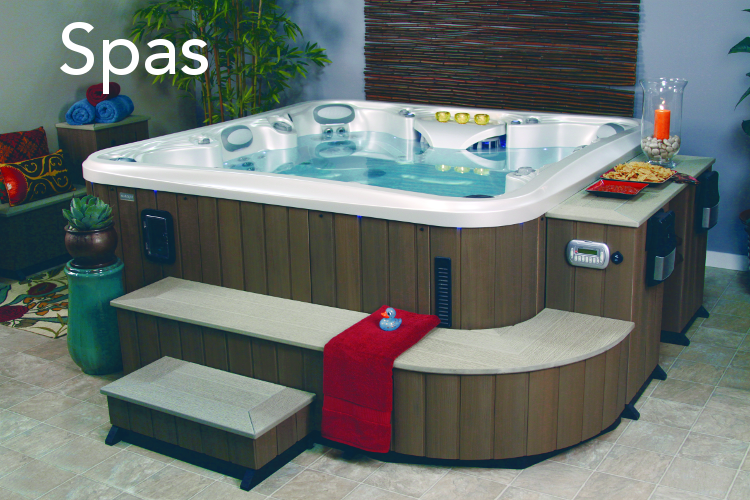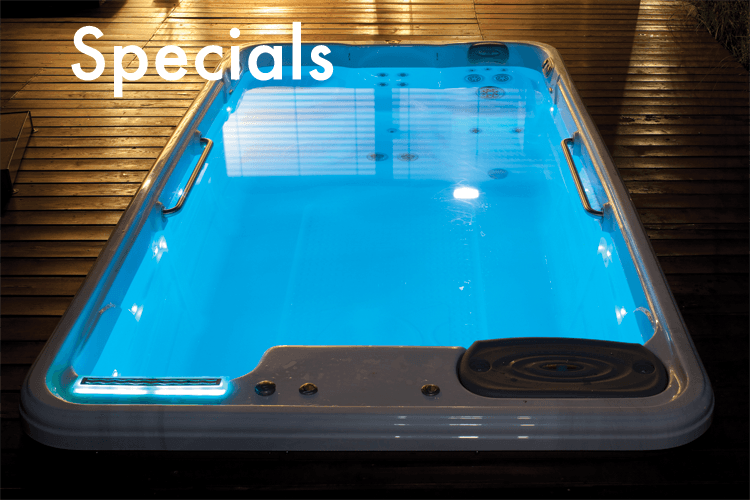The Strongest Jets - Hot Tub Hot Hints
Welcome to the first installment of Hot Tub Hot Tips, our series designed to educate you on hot tubs so you can make sure you purchase the best model for your particular tastes and requirements. If you are buying a hot tub primarily for the therapy aspect – or more specifically, if you are looking for a great massage – than the part you should be looking at is the plumbing; everything from the pipes, the pumps, and the jets, as well as how those parts are arranged. Of course, most of that plumbing is hidden away, so for now we will just cover the parts you can see from the outside – the jets.
While most jets are made primarily of plastic, they can be surprisingly complex. Most of the higher quality ones are designed with individual valves so you can reduce or completely shut off the water to the individual jets, a feature that we consider to be very important as it allows you to customize your massage experience. For instance, if you have a particularly sore or sensitive part of your body, you can reduce the pressure on the jet that focuses there. That may also provide slightly more pressure to the other jets on the seat. A good hot tub will have this feature on almost every jet.
A jet, at it’s most basic, consists of two basic parts. The first is the escutcheon, which is an entirely cosmetic trim that goes around the jet. The second part is the nozzle, which is where the water comes out. If you are looking for a good massage, the nozzle is the easiest way to determine how good the massage will be – quite simply, the larger the inside of the nozzle is at it’s narrowest point, the more water it is designed to allow to flow, and that translates to a better massage.
You’ll find that there are many different designs when it comes to nozzles. Some are designed to have an adjustable angle, some spin, and some even have special machenery inside them to sequence through multiple nozzles. Which one is best? That’s a very subjective topic, and you will find that the answer also depends on where it’s placed. So for that, we give our oldest advice; have the spa filled up and actually try it for yourself.
And now for a complication; jets often have one part built into them that is designed specifically to restrict the pressure going through a jet, so it actually outputs even less water than the nozzle is capable of. This part is called a reducer (sometimes referred to as a restrictor), and it’s embedded inside the jet itself. This is yet another reason to make sure that you get to see your hot tub in person before you buy it, because if they have the model there it’s something you can still find out yourself; most quality jets are designed so that the internals can be removed simply by grasping the escutcheon and turning; the reducer is usually a black or white piece of plastic near the very rear end of the jet insert, and the effect can be judged the exact same way you would a nozzle.
It should also be noted that not every jet will have a reducer in it, particularly if it’s a very high-end jet or a very low-end jet. On the low end ones, the very cheapest ones will have nozzles so small that they do not require reducers, and these are ones that typically are not removable up front. On the high end, they can be avoided entirely in order to provide direct laminar flow, and you can best see this on our Marquis Signature and Vector21 spas.
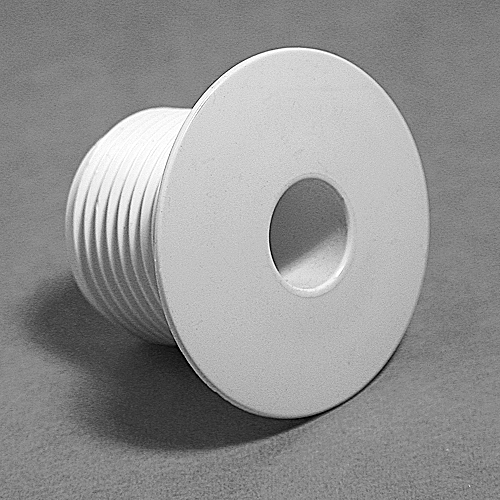 We’ll end this with a few examples to help you on your way. The first example you should be aware of is actually a class of jets called cluster jets. They are also occasionally refereed to as euro jets, though we’re not quite sure where that name came from. As the name implies, these jets are designed to be clustered close together. These jets are best used for legs, arms, feet, and hands, as they are designed to help promote circulation. Cluster jets are something of a dual edged sword because they are also used by super-cheap manufacturers in lieu of more expensive and effective jets, where they are spread out long distances and are given so much pressure with such a small nozzle that they become painful. Cluster jets typically have escutcheons measuring less than 2 inches and nozzles approaching one centimeter or smaller.
We’ll end this with a few examples to help you on your way. The first example you should be aware of is actually a class of jets called cluster jets. They are also occasionally refereed to as euro jets, though we’re not quite sure where that name came from. As the name implies, these jets are designed to be clustered close together. These jets are best used for legs, arms, feet, and hands, as they are designed to help promote circulation. Cluster jets are something of a dual edged sword because they are also used by super-cheap manufacturers in lieu of more expensive and effective jets, where they are spread out long distances and are given so much pressure with such a small nozzle that they become painful. Cluster jets typically have escutcheons measuring less than 2 inches and nozzles approaching one centimeter or smaller.
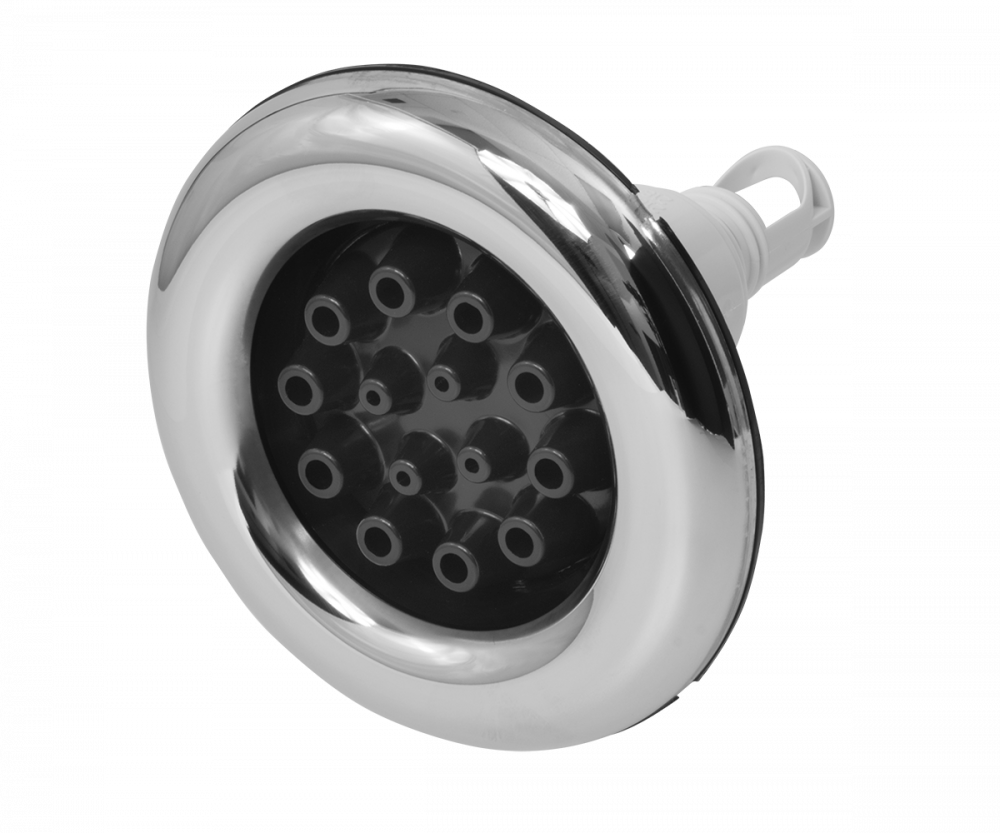 Multi-massage jets are jets with multiple nozzles in them. They can get quite large, with the largest we’ve seen at 12” in diameter. The quality of the massage you will get from these jets vary greatly depending on how they are implemented in the hot tub. The very first thing you should do with these when you discover them is to remove them from the spa and look for a reducer; any restriction of water flow into this style of jet will reduce the pressure coming out of the nozzles. The second thing you should check for is that when this jet is active, there shouldn’t be any pressure from the same pump going to many other jets, since those jets will take the pressure away from the multi-massage jet.
Multi-massage jets are jets with multiple nozzles in them. They can get quite large, with the largest we’ve seen at 12” in diameter. The quality of the massage you will get from these jets vary greatly depending on how they are implemented in the hot tub. The very first thing you should do with these when you discover them is to remove them from the spa and look for a reducer; any restriction of water flow into this style of jet will reduce the pressure coming out of the nozzles. The second thing you should check for is that when this jet is active, there shouldn’t be any pressure from the same pump going to many other jets, since those jets will take the pressure away from the multi-massage jet.
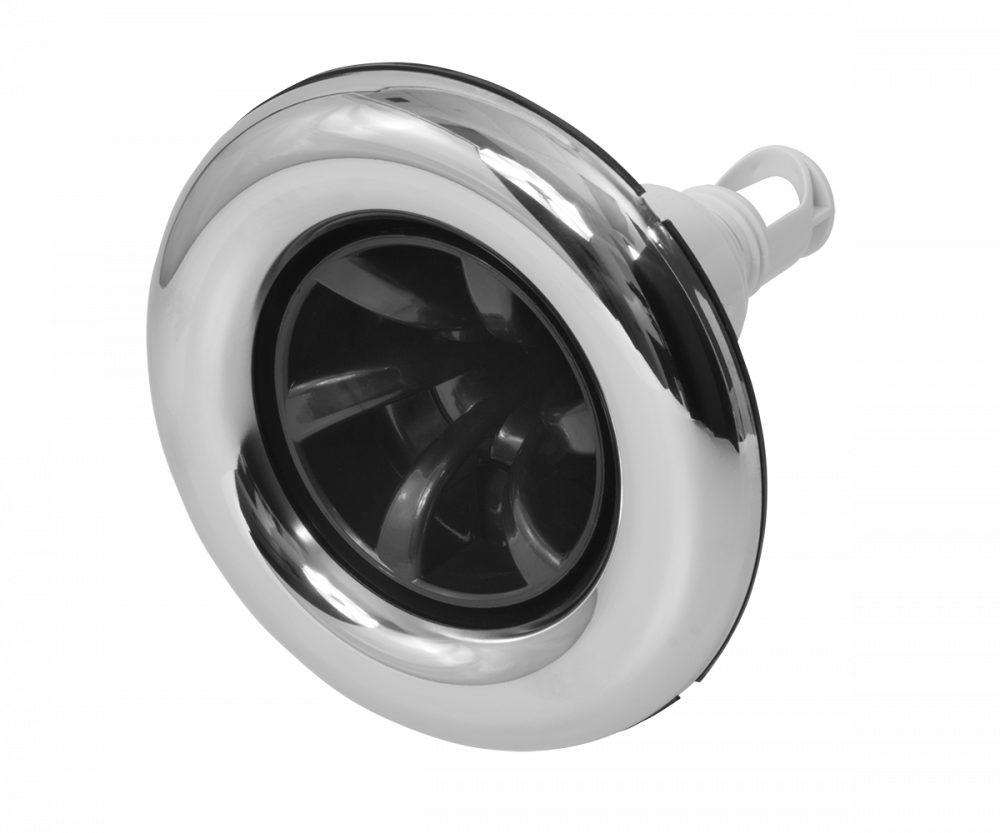 The last type of jet we will cover is actually a category, and those are jets with unusually shaped nozzles. Take a look at this example: can you tell how big the nozzle is? No; in this case you can’t even see the nozzle; it’s hidden behind a decorative piece. It’s also common to give the nozzle a trumpet-like shape so that it appears to be larger than they are. Always remember: the water flow will depend on the most narrow part that the water flows through.
The last type of jet we will cover is actually a category, and those are jets with unusually shaped nozzles. Take a look at this example: can you tell how big the nozzle is? No; in this case you can’t even see the nozzle; it’s hidden behind a decorative piece. It’s also common to give the nozzle a trumpet-like shape so that it appears to be larger than they are. Always remember: the water flow will depend on the most narrow part that the water flows through.
Now that you have this information, it’s important to realize that this information is not going to give you a perfect picture as to how the hot tub will perform. As mentioned earlier, the jets are a part of a whole system including the plumbing and the pumps, as well as where the jet is going to hit your body. As we have always recommended, the absolute best way to judge a hot tub will always be to get in and try it for yourself.









